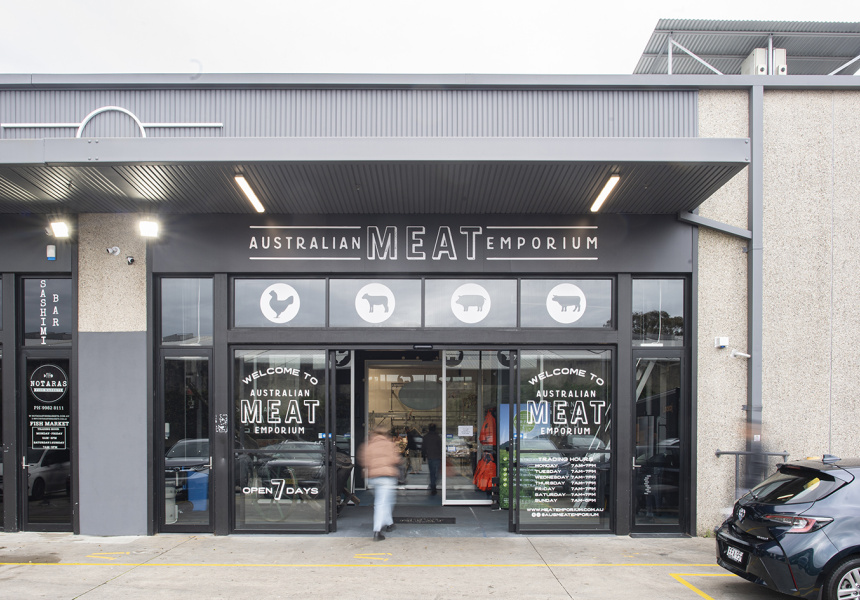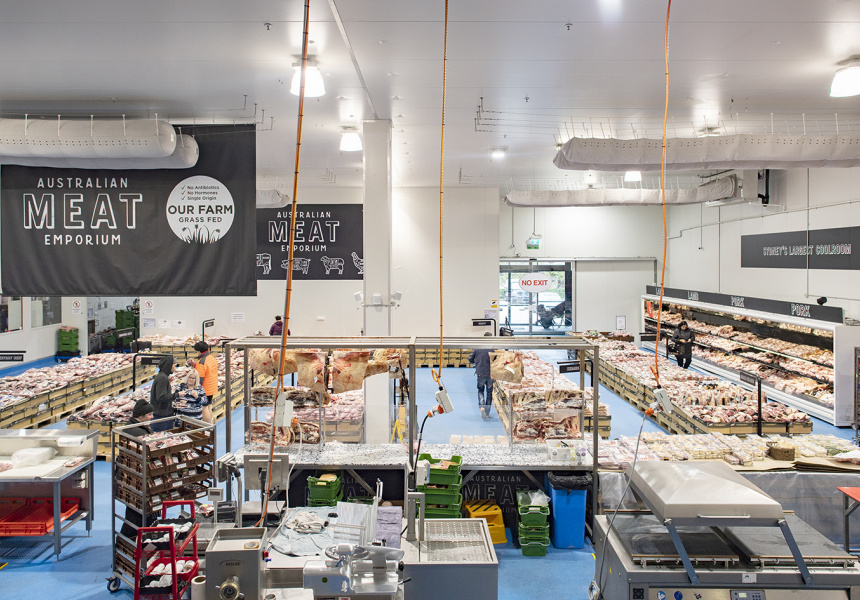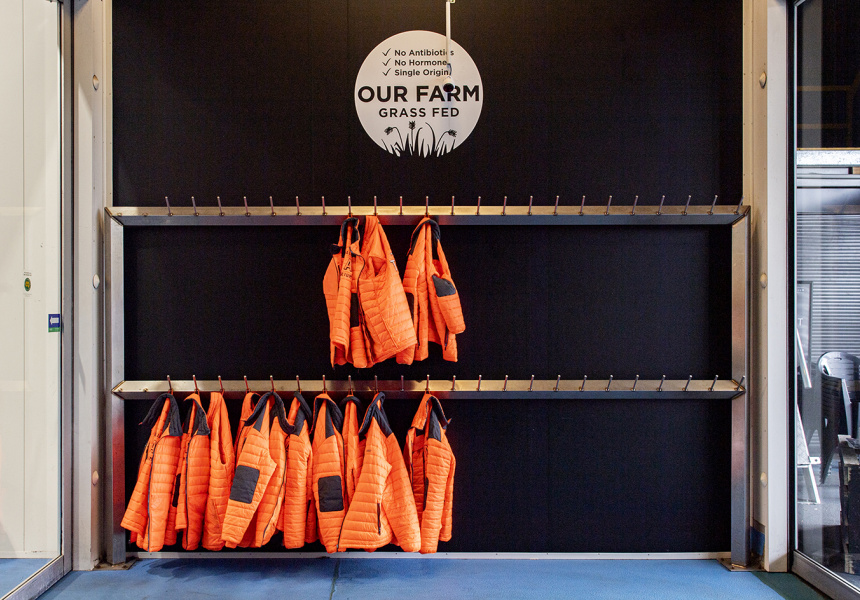At Australian Meat Emporium’s (AME) Alexandria coolroom, newcomers stick out. “You can tell when someone is new,” says commercial director Harriette Greenhalgh-Ward. “They probably don’t have a jacket on, and they might have a look on their face like, ‘Oh my god this is so overwhelming. Where do I start?’ That’s when our staff might approach and talk them through things.”
Shopping here is an experience that comes complete with a uniform: bright orange puffer jackets loaned out to ward off the cold of the 800-square-metre coolroom. A seasoned shopper might choose a leg of lamb and ask the butchers to butterfly it, or a rump to be divided into steaks and cryovaced. A newbie might be guided by floor staff on recipes for secondary cuts of meat.
Off the coolroom floor is an ever-growing grocery selling charcoal, rubs, sauces, speciality pantry items, small goods and even some fruit and vegetables.
We think you might like Access. For $12 a month, join our membership program to stay in the know.
SIGN UPThe emporium opened 12.5 years ago, and the Greenhalghs took it over in 2019. It’s a family operation, with Greenhalgh-Ward’s sister Beatrix Kirkland and husband Rob Greenhalgh-Ward also involved in the business, and dad Graham Greenhalgh at the helm. Farming and butchery run in the blood. Graham grew up on a cattle farm in the foothills of the Snowy Mountains, and his father was a butcher.
AME has its own farm near the original family farm. More than 8000 acres of land with 2500 heads of Black Angus cattle supplies grass-fed, antibiotic-free beef to the Alexandria store.
“It’s beautiful country with crisp, clean air, and river flats of the Tooma River that soak up the rain,” says Greenhalgh-Ward. “There’s a bit of hilly country to move stock around, and the cattle are finished on lush green pastures so they can fatten up.”
Because AME brings in its own meat, from its own farm, they have complete control over the cuts of meat sold. The aim is to use the whole animal.
“We’re more flexible with carcass meat because we have the whole body to work with,” says Greenhalgh-Ward. “Offcuts are a good way to save money. We do a lot of South American-style cuts, like asado ribs, which are short ribs two fingers thick. If you slice them into thin strips and cook over charcoal, they’re delicious, or they make a beautiful ragu. We also do bavette or flank steak, and skirt steak, which is delicious, but not as expensive as a scotch fillet.”
Offal is another way to save. Greenhalgh-Ward says that until recently wealthy countries like Australia have been in the habit of eating prime cuts, which only represent a small part of an animal. The rest got sent overseas or ground into mince. “Other cultures work with the animal to try to extract as much value as they can. Rather than using just one scotch fillet per cow, they’re better at using everything.”
But trends are shifting, and offal is back in fashion. AME has responded by expanding its offal range.
“Even before inflation drove prices up, we were starting to sell more offal,” says Greenhalgh-Ward. “People cut marrow bones down the middle and roast them with sea salt and spread it on sourdough. We sell Wagyu fat, and tongue is becoming really popular. We sell truckloads of beef and liver mince. People like the texture, and they buy it for their kids because it’s a great source of iron.”
As well as beef, there’s free-range pork, Cowra grass-fed lamb, poultry, chicken offal, duck, wild kangaroo, wild venison and goat, and they’re working on a lamb herd on the farm. “We can get almost anything in. Your wish is our command.”
Australian Meat Emporium
29/31 O’Riordan Street, Alexandria
02 9690 0979
Hours:
Mon to Sat 7am–7pm
Sun 7am–6pm



